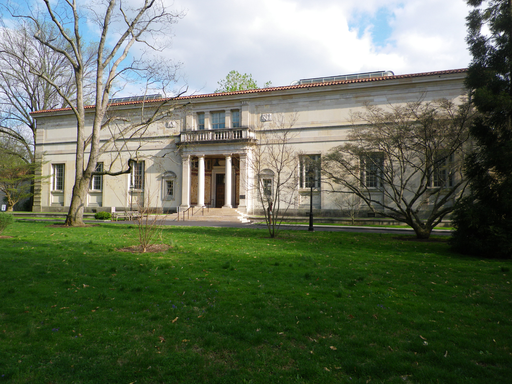The Barnes Foundation
Dr Barnes' $25 billion private collection of art and arboretum.
Here, paintings that would not be out of place at the Louvre or the Met are intimately propped above fireplaces and hung along staircases. It’s like wandering around someone’s home. Turn a corner and find a wall filled with paintings by Monet, beside it a half dozen Van Goghs, with a couple of Picasso’s thrown in for good measure. The collection is eclectic and this continues for room after room, floor after floor. Welcome to the Barnes Museum.
Chartered as an educational institution by the state of Pennsylvania, the Barnes Foundation was founded by Albert C. Barnes in 1922. Born to a working class family in the Kensington section of Philadelphia, Barnes attended Central High School and the University of Pennsylvania. A self-made man, Barnes used his chemistry knowledge and business smarts to earn a sizable fortune from the sale of the dru, Argyrol. He started an “experiment in education” with the secretaries and Black factory workers at the A.C. Barnes Company which eventually became the basis for the educational program of the Barnes Foundation.
By 1929, Barnes had sold his company and devoted himself full-time to the Foundation and collecting art of all types. He chose and arranged the works in “wall ensembles” in the Gallery to illustrate for the Foundation’s students the visual elements and aesthetic traditions he felt were evident in all art forms across periods and cultures. Students were encouraged to look at the arrangements in terms of light, line, color, and space. For the rest of his life, Barnes worked relentlessly to expand his collection and further the educational work of the Foundation.
The art collection boasts 181 works by Pierre-Auguste Renoir, 59 works by Henri Matisse including ‘The Dance’ and ‘The Joy of Life,’ 69 works by Paul Cézanne, 46 works by Pablo Picasso, as well as African sculpture, Pennsylvania German decorative arts, Native American ceramics, and old master paintings.
To ensure the foundation would keep the needs of the school its highest priority, Barnes drew up a trust mandating that the $25 billion collections could never be loaned out, that public access would be limited, and that the art must stay in the Lower Merion property. In 2002, the Trustees petitioned to expand the Board and requested permission of the Orphans’ Court of Montgomery County to move the collection to Center City Philadelphia. Following years of litigation, including weeks of hearings, review of voluminous archival materials, and consideration of the numerous alternatives, it was the Court’s opinion to move the collection. Arranged in the same “wall ensembles” as in Lower Merion, the works are now located on the Benjamin Franklin Parkway in a building designed by architects Tod Williams and Billie Tsien that opened in May 2012.
Community Contributors
Added by
Edited by
Plan Your Trip
The Atlas Obscura Podcast is Back!



























Follow us on Twitter to get the latest on the world's hidden wonders.
Like us on Facebook to get the latest on the world's hidden wonders.
Follow us on Twitter Like us on Facebook